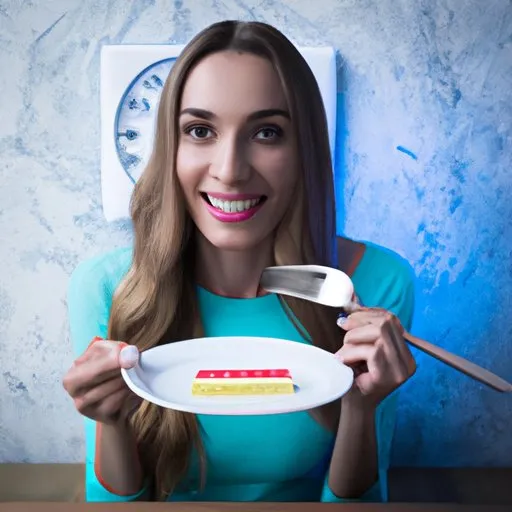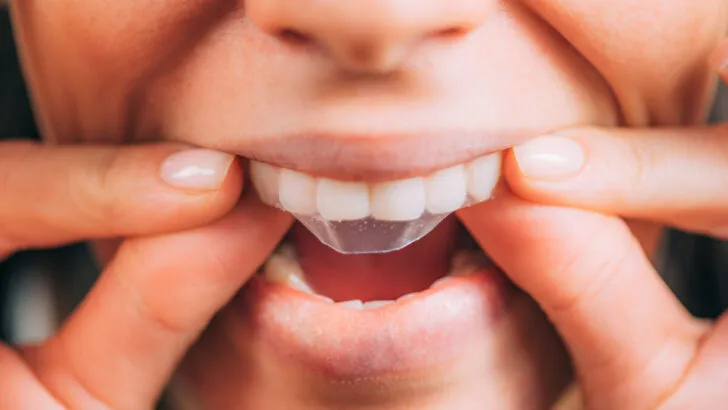Whitening Strips & Eating A Definitive Guide
Achieving a brighter, whiter smile is a common goal, and teeth whitening strips are a popular and convenient method to achieve this. However, after using these strips, many questions arise, particularly regarding when you can safely eat and what foods are best to consume. This guide provides a comprehensive overview of the dos and don’ts of eating after using whitening strips, ensuring you maintain your newly brightened smile. Understanding these guidelines is crucial to prevent staining and maximize the effectiveness of the whitening treatment. The timing of when you eat after using whitening strips directly impacts the results and longevity of your brighter smile. This guide is your complete resource for navigating the post-whitening process, providing you with the knowledge to make informed decisions and protect your investment in a beautiful smile.
How Whitening Strips Work
To understand why eating after whitening strips requires caution, it’s essential to know how they work. Whitening strips typically contain active ingredients that penetrate the enamel to break down stains and discoloration. These ingredients work on the surface and within the tooth structure. The effectiveness of these strips relies on the proper application and adherence to aftercare instructions. Knowing the science behind the process is critical in understanding how to protect your teeth after whitening.
The Active Ingredients in Strips

The main active ingredient in most whitening strips is hydrogen peroxide or carbamide peroxide. These chemicals act as bleaching agents, oxidizing the stain molecules embedded in the enamel and dentin of your teeth. The concentration of the peroxide varies depending on the brand and strength of the strips. The higher the concentration, the faster the whitening effect, but also the higher the potential for sensitivity. Understanding the role of these ingredients is vital for properly using the product.
How Whitening Affects Teeth
Whitening strips temporarily make your teeth more porous. The enamel is slightly dehydrated, and the pores open up to allow the whitening agents to penetrate. During this time, your teeth are more susceptible to staining from external sources, such as food and drinks. This increased porosity is why adhering to post-whitening guidelines, particularly regarding food and drink consumption, is so important. The temporary nature of this increased vulnerability makes it essential to be vigilant about what you consume immediately following the whitening treatment.
The Importance of Waiting to Eat
Waiting to eat after using whitening strips is essential for preserving your results and preventing staining. The whitening process opens the pores in your enamel, making them more receptive to stains. Consuming food or drinks too soon can cause the color pigments to be absorbed into your teeth, negating the whitening effects and potentially staining them. This waiting period allows the enamel to rehydrate and close the pores, reducing the risk of discoloration. Patience in this stage is key to achieving and maintaining a brighter smile. The length of time you wait can greatly affect the lasting power of your white teeth.
Why Teeth are Sensitive After Whitening

Sensitivity is a common side effect of teeth whitening. The peroxide in the strips can irritate the nerves in your teeth, leading to temporary discomfort. This sensitivity is usually temporary and subsides within a few days after completing the treatment. Avoiding extremely hot or cold foods and drinks during this time can help minimize discomfort. Using a toothpaste designed for sensitive teeth can also help alleviate the symptoms. Being aware of and managing sensitivity is part of the post-whitening experience, and understanding the causes can help manage it effectively.
The Risk of Staining Your Teeth
Staining is the primary risk associated with eating or drinking too soon after using whitening strips. Highly pigmented foods and drinks can easily stain your teeth during this vulnerable period. The porous state of your enamel absorbs these pigments, leading to discoloration. Certain foods, such as berries, dark sauces, and coffee, are notorious for their staining potential. Protecting your teeth during this sensitive time is essential for achieving lasting results, and avoiding stain-causing substances is a critical step. Being mindful of your dietary choices can significantly reduce the chances of undoing your whitening efforts.
The Ideal Waiting Time
Generally, the ideal waiting time before eating or drinking anything other than water after using whitening strips is at least one to two hours. This waiting period allows the enamel to rehydrate and the pores to close, reducing the risk of staining. This timeframe is a general guideline, and individual tolerance and specific product instructions can influence the ideal waiting time. It’s always best to err on the side of caution and wait longer if possible. Waiting the full duration ensures the best results.
Recommended Waiting Time

Most dental professionals recommend waiting at least one hour after using whitening strips before consuming anything other than water. However, many recommend waiting two hours for optimal results. The longer you wait, the lower the risk of staining. Read the product instructions carefully, as some brands may have specific recommendations. Consider your dietary habits and the type of food and drinks you plan to consume. The more stain-prone the item, the longer you should ideally wait.
Factors That Can Influence Waiting Time
Several factors can influence the ideal waiting time. The concentration of the whitening agent in the strips can affect how quickly the enamel rehydrates. The type of food or drink you plan to consume is also important. Highly pigmented substances warrant a longer waiting period. The individual’s enamel porosity and overall oral health also play a role. Those with naturally more porous enamel may benefit from waiting longer. Considering these factors can help you determine the most effective waiting time for your specific situation. Furthermore, the specific brand of whitening strips and their unique formulation will influence the recommended waiting time.
Foods to Avoid After Using Strips
Avoiding certain foods is crucial to prevent staining and maintain your newly whitened smile. These foods often contain pigments that can easily adhere to the enamel during the vulnerable period after using whitening strips. Be mindful of your dietary choices for at least the first few hours after treatment. Planning your meals in advance can help ensure you consume foods that are safe for your teeth. This proactive approach is a key component of successful teeth whitening.
Highly Pigmented Foods

Highly pigmented foods are the most significant culprits when it comes to staining. These foods are rich in color compounds that can easily stain your teeth. Examples include berries (blueberries, raspberries, blackberries), dark sauces (soy sauce, balsamic vinegar), and colorful spices (turmeric, saffron). While these foods are often nutritious, they should be avoided immediately after using whitening strips. Be vigilant about reading the ingredients and avoiding foods with intense colors.
Acidic Foods and Drinks
Acidic foods and drinks can erode the enamel, making your teeth more porous and susceptible to staining. Citrus fruits, tomatoes, and vinegar-based dressings should be limited. Similarly, avoid acidic beverages like soda, sports drinks, and fruit juices. These items can compromise the integrity of your enamel and increase the risk of staining. Staying hydrated with water and selecting alkaline foods can help to neutralize acids in your mouth.
Foods to Eat After Using Strips
Choosing the right foods after using whitening strips can help protect your teeth and maintain their brightness. Opt for foods that are less likely to cause staining and may even contribute to oral health. This approach ensures you’re not only protecting your teeth but also promoting their health.
Foods with Minimal Staining Risk

Foods with minimal staining risk are generally white or lightly colored. Examples include white rice, pasta, plain chicken, fish, and tofu. Dairy products like yogurt and milk are also safe options. Be mindful of any sauces or added ingredients that might contain staining agents. Sticking to these neutral-colored foods will help you safely satisfy your hunger without compromising your whitening results. Preparing meals in advance can help ensure you have readily available, safe food choices.
Foods That Can Help Remineralize Teeth
Some foods can help remineralize your teeth, strengthening your enamel. Calcium-rich foods, such as dairy products, can provide the building blocks your teeth need. Foods with a high water content, like cucumbers and celery, help to stimulate saliva production, which naturally cleanses your mouth and can help to neutralize acids. These dietary choices support overall oral health while protecting your newly whitened teeth. By choosing these foods, you are contributing to a healthier and brighter smile long after the whitening treatment is complete.
Tips for Maintaining Whitened Teeth
Maintaining your whitened teeth requires ongoing care and attention. By following good oral hygiene practices and making conscious dietary choices, you can extend the longevity of your results. These practices will help you to enjoy your brighter smile for a more extended period and keep your teeth healthy.
Proper Oral Hygiene

Proper oral hygiene is essential. Brush your teeth twice a day with a whitening toothpaste, and floss daily to remove plaque and food particles. Consider using a mouthwash specifically designed for whitening. Regularly cleaning your teeth removes surface stains and prevents new ones from forming. Consistent oral hygiene significantly contributes to maintaining your white smile and promoting overall oral health. Regularly replacing your toothbrush and using it correctly enhances the effectiveness of your cleaning routine.
Regular Dental Check-ups
Regular dental check-ups are also important. Visit your dentist for professional cleanings and check-ups every six months. Professional cleanings remove plaque and tartar that brushing and flossing may miss. Your dentist can also assess the health of your teeth and gums, addressing any issues early. Regular dental visits are essential for maintaining your oral health and preserving your bright smile. Your dentist can also provide personalized advice on maintaining your teeth whitening results, based on your specific needs and habits.
Alternatives to Eating Immediately
If you must eat shortly after using whitening strips, consider alternatives to solid foods. Drinking plain water is always safe, and it helps to stay hydrated. Waiting a bit longer before eating will always yield better results. Plan your schedule to allow for the recommended waiting time, or choose to whiten your teeth at a time when you can easily avoid eating for a couple of hours.
